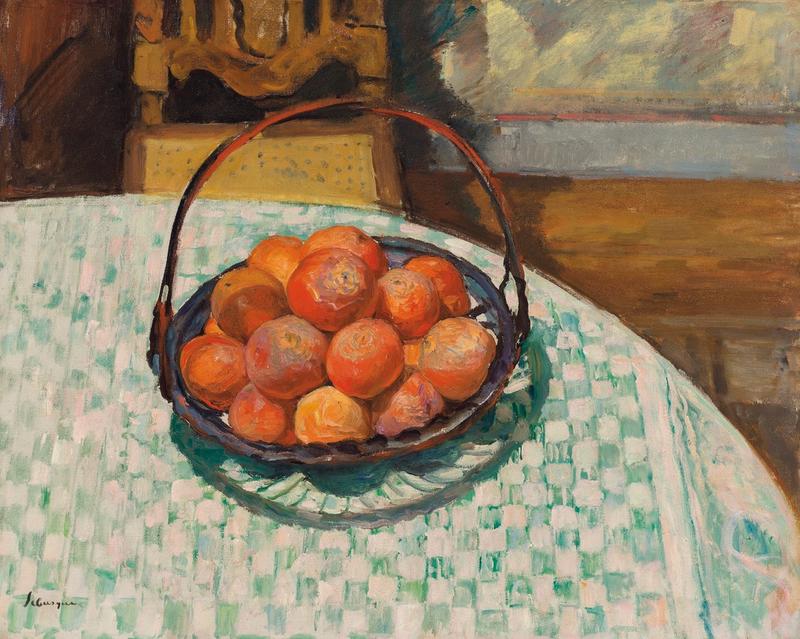La Corbeille de Fruits

“Intimism, a term which best describes Lebasque’s painting, refers to the close domestic subject matter, supremely realized by Bonnard and Vuillard, in such a manner as to convey the personal nature of his response to the thing painted, and the universal familiarity of home and family. There is a sense of calm infused in Lebasque’s paintings which celebrates the fullness and richness of life. In his placid scenes of gardens and beaches, terraces and dinner tables, Lebasque portrays his family in particular, but in such a way that he appeals to a larger sense of family gathering and devotion” (L. Banner, Lebasque, 1865 – 1937, San Francisco, 1986, p. 12).
Described during his lifetime as ‘the painter of the good life’ and “the painter of joy and light”, Henri Lebasque was a French Post-Impressionist artist. He was born in 1865 in Champigné, France and initially educated at the École Régionale des Beaux-Arts d’Angers. In 1886 Lebasque was in Paris where he met Camille Pissarro and Auguste-Pierre Renoir; both artists had a profound impact on Lebasque’s work and style. Perhaps best known for his fauvist-style subjects and his clever use of light, Lebasque was also influenced by his fellow painters and lifelong friends Henri Matisse and Pierre Bonnard; they became neighbours in Cannes in 1924. The French Riviera provided Lebasque with an abundance of colour and light for his subjects. George Seurat and Paul Signac contributed to his career also, having taught him the importance of colour theory. Considered an important member of the post-impressionist movement, Lebasque regularly exhibited at the Salon des Independents, alongside many of the great artistic names of the period. His paintings were often executed en plein air and his figurative subjects regularly include his wife and two daughters in beautiful, sunny gardens and interiors: his palette bold and expressive with colour. Lebasque also enjoyed painting still lives, particularly if the weather was inclement. With La Corbeille de Fruits he uses richly colourful brushwork, inviting the viewer to appreciate the richness of the work. Lebasque gained much commercial success and popularity during his lifetime. He died in Le Cannet, France in 1937. His works are represented in many private collections as well as institutional collections worldwide including: the Museum of Modern Art, New York, the National Gallery of Washington, D.C and the Musée d’Orsay, Paris, as well as the National Museum of Western Art, Japan, and many others.



